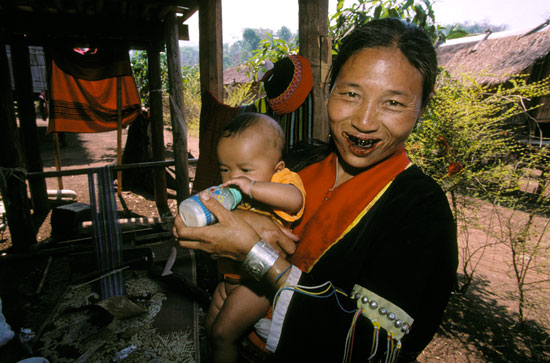 Wide-angle lenses, particularly those of focal length 17 - 35mm, are useful when portraying people in the context of their environment. The camera must be close to the subject to give a worthwhile reproduction ratio, and perspective is consequently accentuated. Under these circumstances, perhaps less than a metre from the subject, care must be taken to ensure that facial features do not become grotesque. Depth relationships of different planes in a scene are clearly shown, and relationships between objects appear to change. Also, vertical lines converge if the camera is moved away from the horizontal. What is acceptable is largely a matter of taste.
Wide-angle lenses, particularly those of focal length 17 - 35mm, are useful when portraying people in the context of their environment. The camera must be close to the subject to give a worthwhile reproduction ratio, and perspective is consequently accentuated. Under these circumstances, perhaps less than a metre from the subject, care must be taken to ensure that facial features do not become grotesque. Depth relationships of different planes in a scene are clearly shown, and relationships between objects appear to change. Also, vertical lines converge if the camera is moved away from the horizontal. What is acceptable is largely a matter of taste.
The broad field of view of a wide-angle lens reveals great swathes of the surroundings, so depth of field, composition and exposure must be carefully considered. When using a 17mm lens focused at one metre and set to an aperture of f/16, depth of field extends from about 50cms to infinity. Background detail is rendered sharp and must be interesting and appropriate if it is to provide context. Off-centre subject placement leaves lots of empty space, so a small or distant secondary subject may be needed to restore visual balance.
Determining exposure for a wide field of view, where contrast may be extreme, is not completely straightforward. A person's face or body may occupy only a small part of an image. Contrast between the subject and other parts of the image, such as the sky or an unlit recess, may well exceed the available latitude. If so, it must be reduced - perhaps by re-framing, diffusing the light or using some form of fill. Centre-weighted measurements are obviously a poor compromise where the subject is off-centre. Averaged or multi-segment measurements combined with some fill may prove adequate. Alternatively, take spot measurements from key areas of highlight and shadow, use fill and do some bracketing.






